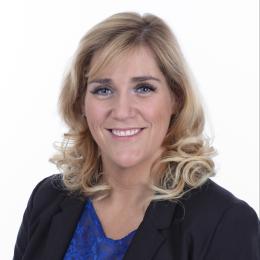“I spent a full year running around with my binder in my hands talking to any leader who would listen on why we needed a Change Center of Excellence (CCoE),” remarked a Director of Change Management at a large financial services firm.
According to North Highland’s research, 89 percent of organizations report that the pace of change has accelerated in the past two years. For companies unable to keep up, the implications are dire. For example, according to a report from the Harvard Business Review, one in three companies will delist from the exchange on which they trade in the next five years, due to bankruptcy, liquidation, M&A, or other causes. That’s six times the delisting rate of companies 40 years ago. To keep pace in this rapidly evolving climate, it’s important that organizations professionalize their change capability in the form of a CCoE. The CCoE should be built upon the following actionable principles:
- Executive Alignment - align executives on the vision for change
- Organizational Culture - ensure change is aligned to the culture of the organization
- Organizational Design - follow organization design principles to develop an operating model and structure for the CCoE
1. Executive Alignment
Executive sponsorship is acutely important in building internal change capability. Prosci shows in its Best Practices in Change Management that executive sponsorship is the largest success factor in implementing change, yet nearly half of organizations in North Highland’s research (48 percent) report that securing sponsorship is a challenge.
An up-front emphasis on alignment allows leaders to have the conversations to clarify and agree on the vision for change. While many executives agree with the importance of executive alignment and preparation, the comment we hear most frequently is “we already have alignment; let’s just get started.” Generally what follows is an extended timeframe because the CCoE is built, but slow to be implemented, due to limited buy-in and sponsorship from leaders.
2. Organizational Culture
In North Highland’s research, a ‘lack of cultural buy-in at all levels’ was cited as the most common roadblock to transformation success. Aligning to the culture of an organization allows change practitioners to develop effective tools and processes within the current norms. The CCoE will also eventually play a major role in the ongoing management of the organizational culture through training, communications, and stakeholder management. With a mature CCoE, change can be used to continuously evolve the culture and work of an organization by reshaping behavioral norms that establish and evolve new ways of working.
3. Organizational Design
Planning the operating model, roles, and responsibilities surrounding the CCoE helps ensure more seamless adoption. Many times, we see leaders skipping these initial steps to gain efficiencies in the short-term, leading to ineffectiveness and rework. Our research supports this observation, with 59 percent of respondents reporting that operational or process-related challenges have stemmed from recent change initiatives.
Taking the shortcut also increases the risk of poor job fit and disengaged employees. By carefully defining the operating model and structure of the CCoE, organizations can identify specific skills and abilities for job profiles. This process then allows for the selection of the best-fit individuals who will lead and champion change across the organization.
Today, as the leader of a team of over 10 practitioners, the previously mentioned Director of Change Management has made her case successfully. She succeeded because she knew the importance of 1) planning now or paying later, 2) taking the time to do it right, and 3) not taking shortcuts. She recognized that building a successful change capability meant using proven and professionalized change management practices. While following a change methodology may be straightforward on systems implementations, embedding sustained change capability in the form of a CCoE can be complicated without a focus on the above principles.
Planning now to avoid paying later is essential to a successful CCoE—one that can help organizations adapt ahead of the increasing pace of change. Take the time to:
- Check your assumptions and avoid underestimating the importance of executive alignment around the vision for change.
- Ensure the efforts to align change practices and tools to the culture of the organization help make change stick.
- Establish an effective operating model that will empower change leaders who are ready to transform your organization.
The following report draws on the results of a North Highland-sponsored survey conducted in July 2019. The survey encapsulates the perspective of more than 300 cross-functional business leaders at U.S., U.K., and Europe-based organizations with annual revenues > $1B.

